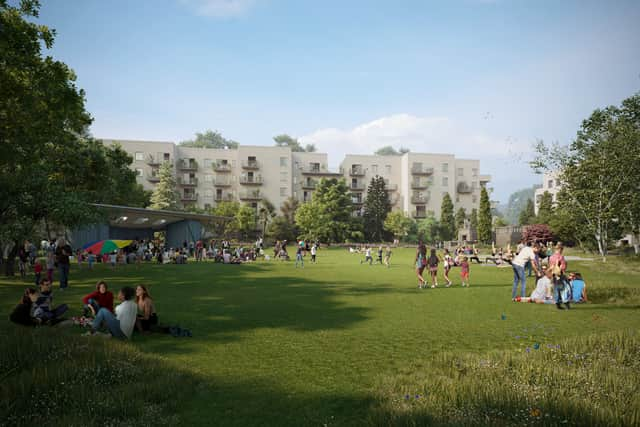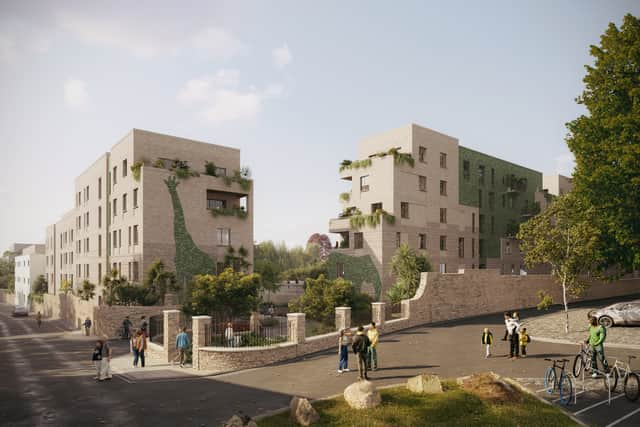Bristol Zoo: Everything you need to know after major update on Clifton site’s future
and live on Freeview channel 276
When Bristol Zoo closed the doors on its Clifton site back in September it was a historic day for the city as it bid farewell to 187 years of history. When the dust settled, there were plenty of questions looming over the occasion, chiefly; what happens now?
What are the latest plans for the Clifton site?
As is usually the case in Bristol when a 12-acre site becomes available, it was earmarked for housing. And yesterday (April 18) Bristol City Council officers brought plans to build 196 homes on the plot of land one step closer by recommending the plan for approval. The decision would also provide free public access to the gardens for the first time since the zoo opened in 1836.
The planning application will be decided on by councillors on April 25 when they vote on whether or not the redevelopment can go ahead. During the meeting, each councillor can vote to approve, refuse or defer the application to another date.


Who owns the site?
Bristol Zoological Society (BZS) has control of the site which they left due to several reasons but the deciding factors seem to have been the negative impact the second national lockdown had on the site’s coffers during the Covid pandemic.
The society plans to sell the 12-acre site to help fund the creation of a new zoo at its Wild Place Project on the outskirts of Bristol. Many of the zoo’s animals are to be transferred to this site which is due to be completed in 2024. In total, 50 species will make the move including the lowland gorilla troop which had become synonymous with Bristol Zoo since the arrival of Alfred in 1930.
BZS lodged a planning application in May 2022 for the Wild Place Project - this was later revised and resubmitted in October of that year. It will offer “spacious, modern facilities, significant growth in conservation and education work and an innovative visitor experience”.
What would the housing plans look like?
As mentioned, the plans have been recommended for approval. If they are passed, the site will once again become accessible to the public, with daytime access for leisure and recreation, and curated events in the evenings.
Aesthetically, the society intends to keep the Grade II-listed entrance lodge - offering a café, exhibition space, community rooms and public toilets, and providing a permanent base for the Avon Gorge and Downs Wildlife Project. A nature-inspired play area and theatre are included in the plans, both of which are not currently available in the site’s surroundings.
Of the 196 homes which could be built, 20% are set to be classed as affordable housing. The homes will range in size to encourage different generations to live there. Elsewhere, in response to feedback received, further improvements in the resubmitted plans include enhancements to the entrances to the site to encourage greater public access, the addition of a pedestrian-only entrance along College Road, a reduction in the height of the proposed extension to the Clock Tower building, and improvements to the design of the apartment blocks along Clifton Down.


Is there opposition to the plans?
In short, yes. As expected with such a historic site, there are a variety of views on what the land should be used for and a campaign group called ‘Save Bristol Zoo Gardens’ has launched a petition which has more than 9,000 signatures objecting to ‘the gardens being turned into a luxury housing estate’.
Last month, the group organised a noisy protest which was attended by more than 100 people who were against the proposals to relocate Bristol Zoo. People of all ages joined the walk from the Victoria Rooms in Clifton to the now-closed zoo, where they then congregated at the entrance to hear from speakers, including former mayor George Ferguson, who has previously said those on the council’s planning committee who approve these plans will be ‘on the wrong side of history’.
What else has been said?
Dr Justin Morris, Chief Executive of Bristol Zoological Society, said: “We are really confident in our plans and the quality of the design proposals we have submitted.
“As well as delivering sustainable, much-needed homes for Bristol, our plans for Bristol Zoo Gardens secure the site as a public park, a community asset, so everyone can enjoy its beauty and heritage for many years to come.”
In response to the plans, Historic England has said: “The ability for visitors to enter the site, free of charge, post-redevelopment, is a significant heritage benefit. Generally, Historic England finds much to admire in the proposed development, which we feel on the whole is a sensitive response to its historic context.”
A separate planning application for 62 new homes on the West Car Park, a Clifton brownfield site belonging to Bristol Zoological Society was approved by councillors in November last year.
